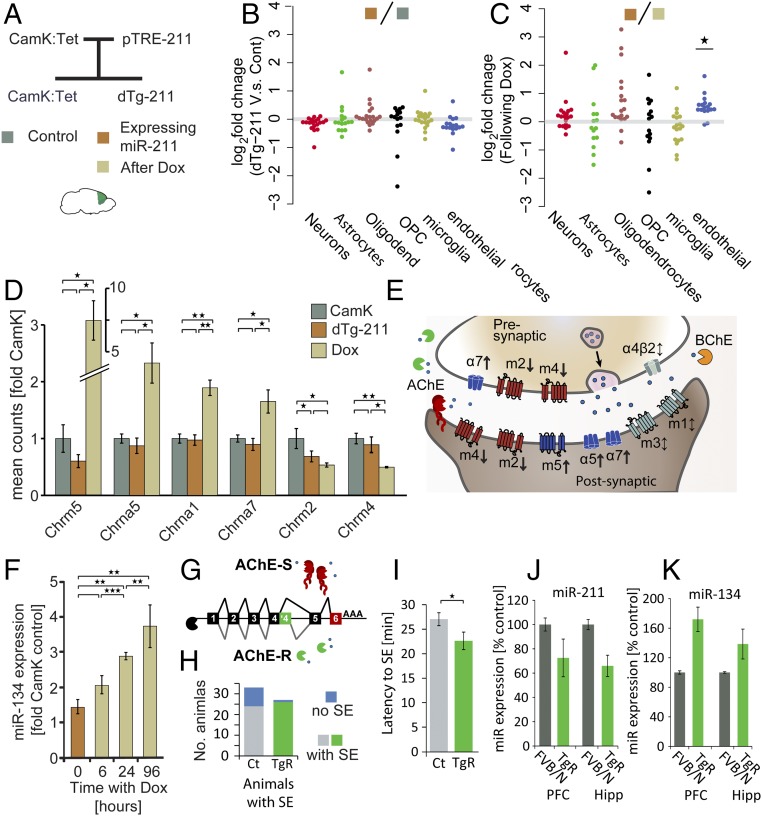Fig. 4.
MiR suppression in dTg-211 mice alters cell type marker genes and cholinergic receptors, and a cholinergic mouse model shows concordant miR changes alongside increased seizure susceptibility. (A) Experimental setup: CamK:TtA mice bred with Tg-pTRE-211 mice generated dTg-211 mice and littermate CamK controls. Illumina-compatible libraries from frontal cortex RNA of mice before or under doxycycline (color-coded squares) were sequenced. (B) Sustained cell-type marker (39) in dTg brains. (C) Elevated endothelial marker genes following Dox. (D) Modified muscarinic and nicotinic cholinergic receptors in Dox-treated dTg-211 brains. (E) Scheme of cholinergic receptors and regulators (shown in D) in brain cholinergic synapses. Note Dox-induced down-regulation of cholinergic receptors suppressing synaptic transmission: CHRM2 and CHRM4 (m2 and m4); and up-regulation of facilitators CHRM5 (m5), CHRNA5, and CHRNA7 (α5 and α7). (F) MiR-134 up-regulation in dTg-211 mice following Dox administration parallels the time frame of seizure induction in this model. (G) Scheme of the synaptic and nonsynaptic AChE transcript variants and corresponding protein forms. (H) Mice overexpressing the nonsynaptic cholinergic enzyme AChE-R (TgR) (76) show higher propensity with (I) shorter latency for status epilepticus event following pilocarpine injection, alongside (J) miR-211 reduction and (K) miR-134 elevation in prefrontal cortex (PFC) and hippocampus (Hipp) of TgR mice. Results were considered significant at *P < 0.05, **P < 0.01, ***P < 0.001, after correction for multiple testing when applicable.

